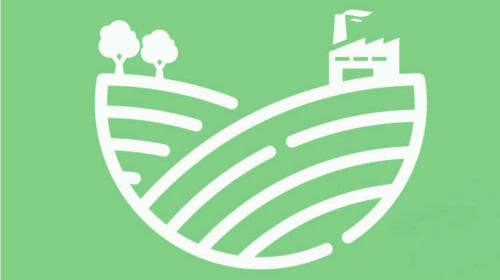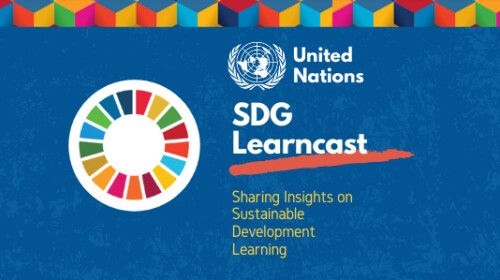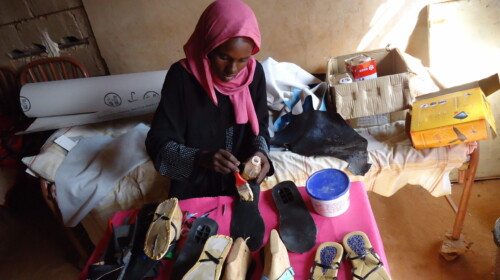Integrated landscape management and large-scale landscape restoration should be in every company’s business strategy because in order to reach the Sustainable Development Goal on Land Degradation Neutrality (SDG Number 15.3) scaling up and acceleration of business-driven landscape restoration is urgently needed. This requires business professionals with a vision, the right knowledge and skills. “A business approach to sustainable landscape restoration” is a free online course that can be followed on the Coursera platform. This MOOC (Massive Open Online Course) aims to train the next generation of business professionals and developers to acknowledge business’ interdependency with healthy landscapes and understand the value of ecosystem resources. It offers comprehensive knowledge of landscape degradation and landscape restoration from both the perspective of natural science and from an economics and business administration perspective. Participants are introduced to ecosystem functions, degradation and restoration, the economics of land degradation, as well as useful business tools to carry out landscape restoration with multiple returns. The MOOC concludes with a real-life business case designed to deepen participants’ understanding of the theories and frameworks learned during the course, as well as practicing application of the tools and methods. This MOOC is first of a kind in that it connects economy and ecology in relation to landscape restoration. This course is developed by ENABLE – which stands for European Network for Advancement of Business and Landscape Education, led by Rotterdam School of Management, Erasmus University. Other partners: Commonland, United Nations University, Land Restoration Training Programme (UNU-LRT), Spanish National Research Council (CSIC-CEBAS), Nova SBE. ENABLE was co-funded by the Erasmus+ programme of the European Union.
Target Audience
Business and environmental professionals who are aware of the importance of bridging economy and ecology, as well as students who want to gain a broader and integrated perspective on landscape restoration. Conservationists who would like to know more about business models and partnerships.
Learning Objectives
Learning Objectives
Week 1 - Gentle Introduction
After this module, students should be able to:
- Understand the importance of landscapes and the scale of degradation in the world
- Identify the main causes of landscape degradation
- Explain why it is important to prevent land degradation and reverse it by land restoration
- Understand Land Degradation Neutrality
- Discuss the need to address landscape degradation
- Explain the urgency of scaling solutions for landscape degradation
- Interpret land use change and land degradation in the context of the so-called planetary boundaries
- Demonstrate the potential for large-scale landscape restoration
- Distinguish the incentives for business to engage in integrated land management and large-scale landscape restoration
- Identify the role that the private sector can play
- Understand the 4-returns approach
- Apply the 4-returns approach in practice
Week 2 – Biology of landscapes
After this module, students should be able to:
- Learn about ecosystems and the services they provide
- Understand the importance of ecosystems for achieving the UN Sustainable Development Goals
- Explain what landscape degradation, how it affects ecosystem services and resilience
- Describe the main processes, signs, and drivers of landscape degradation
- Explain the concepts of land potential and how it affects what can be achieved on the land
- Recognize how land potential and land condition can be used to support land management decisions
- Recognize the signs in the landscape that determine land condition
- Explain how land condition influences the resilience of ecosystems to recover from degradation
- Explain what ecological restoration is
- What drives restoration activities
- Recognize important types of interventions to facilitate recovery of degraded ecosystems, their role, and the conditions they apply to
- Become aware of the main steps in planning, implementation, and monitoring of restoration projects
Week 3
After this module, students should be able to:
- Understand how the economic value of land is assessed
- Appreciate the importance of sustainable land use for business by understanding the global costs of landscape degradation and the benefits from integrated landscape management
- Categorise ecosystem services
- Understand the Total Economic Value framework select the most appropriate economic valuation method
- Identify the business risk of landscape degradation
- Assess rewarding opportunities for sustainable business
- Explore tools used by companies to understand and value their impact and dependency on ecosystem services.
- Understand and discuss the economics of land management from a holistic perspective
- Explain the Economics of Land Degradation Initiative 6+1 steps methodological approach
- Understand the different components of cost-benefit analysis
- Outline the categories of costs and benefits being assessed with this method
- Exemplify alternative scenarios
- Discuss timeframe for analysis, indicators of economic viability, and how to test the validity of results
Week 4
After this module, students should be able to:
- Explain what roles professionals can play
- Discuss the different skills involved in landscape restoration projects
- Describe the five phases of a landscape restoration project
- Identify different interventions that can be used for landscape restoration
- Identify the 4-returns framework in a real-life project
- Identify and describe the roles of team members in a restoration project
Week 5
After this module, students should be able to:
- Understand what wicked problems are
- Distinguish among simple, complex, and wicked problems
- Identify wicked problems by the characteristics that define them
- Assess the degrees of wickedness of a wicked problem
- Understand why landscape degradation can be seen as a wicked problem
- Approach landscape degradation as a wicked problem
- Understand the partnerships concept
- Identify the success factors and challenges that make or break a partnership
- Understand what type of partnership belongs to what type of problem
- Distinguish between so-called coalition of the willing and coalition of the needed
- Understand how to manage a complex configuration of partners based on strategic fit, strategic alignment, and strategic portfolio management.
Week 6
After this module, students should be able to:
- Understand what business models are
- Develop and analyse business models using the business model canvas tool
- Discuss how partnerships can be integrated into a business model
- Apply the private-public partnership (PPP) canvas
- Understand the sustainable business model innovation process
- Recognize the organisational practices that are required to develop your own sustainable business model innovation process.
- Recognize the type of organisational practices that are required to lead a business model from the design canvas to full launch.
Week 7
After this module, students should be able to:
- Identity the concepts and theories of the course in a real-life case
- Apply the tools and methods introduced in the course to a real-life case
- Develop a holistic solution for a real-life landscape restoration project







